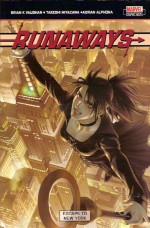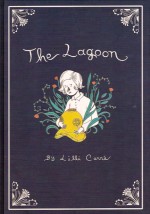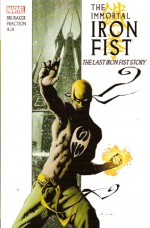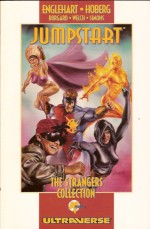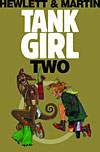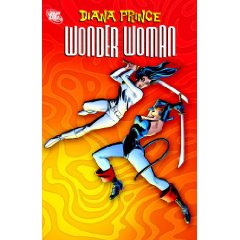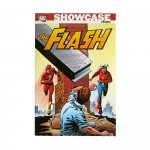
By John Broome, Gardner Fox, Carmine Infantino, Joe Giella & Murphy Anderson (DC Comics)
ISBN: 978-1-4012-1805-8
The second Flash triggered the Silver Age of comics, and for the first ten years or so, in terms of artistic quality and story originality, it was always the book to watch. Following his debut in Showcase #4 (cover-dated October 1956) police scientist Barry Allen was characteristically slow in winning his own title but finally after three more trial issues stood on his own wing-tipped feet in The Flash #105 ( a February-March 1959 cover-date so it was out for Christmas 1958).
He never looked back and his first experimental endeavours can – and should – be economically yours by purchasing the previous volume of this series (ISBN13: 978-1-4012-1327-5, covering Showcase #4, 8, 13 and 14 and Flash #105-119).
The comic-book had gelled into a comfortable pattern of two tales per issue alternating with semi-regular book-length thrillers and this volume begins with a glorious example of the latter from Flash #120 (May 1961). The majority of adventures were produced by peripatetic scripter John Broome and the slickly innovative art-team of Carmine Infantino and Joe Giella, and ‘Land of Golden Giants!’ saw them at their very best in a fanciful science fiction drama where a small expedition of explorers including Barry and his protégé Wally West – AKA Kid Flash – were catapulted back millennia to the very moment when the primal super-continent (or at least the parts that would become Africa and South America) was splitting apart.
Flash stories always found a way to make cutting-edge science integral and interesting. A regular filler-feature was the speed-themed “Flash-Facts” which became a component of the stories themselves via quirky little footnotes. How many fan-boys turned a “C” to a “B” by dint of their recreational reading? I know I certainly impressed the heck out of a few nuns at the convent school I attended! (But let’s not visualise; simply move on…)
Issue #121 saw the return of a novel old foe as ‘The Trickster Strikes Back!’. The costumed criminality was balanced by Cold War skulduggery in the gripping ‘Secret of the Stolen Blueprint!’ (guest inked by the brilliant Murphy Anderson). Another contemporary zeitgeist undoubtedly led to ‘Beware the Atomic Grenade!’, a witty yarn that introduced a new member to Flash’s burgeoning Rogues Gallery when The Top turned from second-rate thief to global extortionist by means of a rather baroque thermonuclear device.
In counterpoint Kid Flash dealt with smaller scale catastrophe in ‘The Face Behind the Mask’ wherein a pop-star with a secret identity (based, I believe, on a young David Soul who began his showbiz career as a folk singer known as “the Covered Man” because he performed wearing a mask) was blackmailed by a villainous gang of old school friends.
Gardner Fox didn’t write many Flash scripts at this time, but those few he did were all dynamite. None more so than the full-length epic that literally changed the scope of American comics forever. ‘Flash of Two Worlds’ introduced the theory of alternate Earths to the continuity and by extension resulted in the pivotal multiversal structure of the DCU, Crisis on Infinite Earths and all the succeeding cosmos-shaking crossover sagas that grew from it. And of course where DC led, others followed…
During a benefit gig Flash accidentally slips into another dimension where he finds that the comic-book hero he based his own superhero identity upon actually exists. Every adventure he had absorbed as an eager child was grim reality to Jay Garrick and his mystery men comrades on the controversially named Earth-2. Locating his idol Barry convinces the elder to come out of retirement just as three Golden Age villains, Shade, Thinker and the Fiddler make their own wicked comeback. And above all else, Flash #123 is a great read that still stands up today.
Utterly unaware of the stir that was brewing in fandom’s ranks, it was business as usual with #124’s alien invasion thriller ‘Space Boomerang Trap!’ which featured an uneasy alliance between the Scarlet Speedster, Elongated Man and the sinister Captain Boomerang whilst the back-up ‘Vengeance Via Television!’ tested our hero’s wits when a mad scientist used TV waves to expose his secret identity.
‘The Conquerors of Time!’ (Flash #125 December 1961) was another mind-boggling classic as time-travelling aliens attempted to subjugate Earth in 2287AD by preventing fissionable elements from forming in 100,842,246BC. Antediluvian lost races, another pivotal role for Kid Flash (easily the most trusted and responsible sidekick of the Silver Age), the introduction of the insanely cool Cosmic Treadmill plus spectacular action make this a benchmark of quality graphic narrative.
The drama continued unabated in the next issue when Mirror Master resurfaced in ‘The Doom of the Mirror Flash!’ whilst the second story looked into Barry Allen’s past in ‘Snare of the Headline Huntress!’ wherein childhood sweetheart Daphne Dean tries to rekindle Barry’s love to boost her Hollywood profile. In #127 ‘Reign of the Super-Gorilla!’ saw Grodd return, using his telepathy to run for Governor (not as daft as it sounds, honest!) whilst Kid Flash resolved parental problems in ‘The Mystery of the Troubled Boy!’ Flash #128 introduced time-travelling magician and psychotic egotist Abra Kadabra in ‘The Case of the Real-Gone Flash!’ but still had room for the intriguing vignette ‘The Origin of Flash’s Masked Identity!’
Fox and Earth-2 returned in #129’s ‘Double Danger on Earth!’ as Jay Garrick ventured to Earth-1 to save his own world from a doom comet, only to fall foul of Captain Cold and the Trickster. As well as double Flash action, this tale pictorially reintroduced Justice Society stalwarts Wonder Woman, Atom, Hawkman, Green Lantern, Doctor Mid-Nite and Black Canary. Clearly Editor Schwartz had something in mind…
For the meantime though it was back to basics with ‘Who Doomed the Flash?’; an intriguing mystery that seemingly pooled the threats of Trickster, Captain Cold, the Top, Captain Boomerang and the Mirror Master in a superb conundrum, brilliantly solved by the Vizier of Velocity whilst his junior partner had problems enough with the Weather Wizard when ‘Kid Flash Meets the Elongated Man!’
RSVP-ing to a landmark guest-shot in Green Lantern #13 (‘Duel of the Super-Heroes!’ – see Showcase Presents Green Lantern vol. 1, ISBN13: 978-1-4012-0759-5) the Emerald Crusader again joined with our hero to defeat alien invaders in the engrossing feature-length ‘Captives of the Cosmic Ray!’ whilst #132’s lead ‘The Heaviest Man Alive!’ returned the speedster to the dimension of Gobdor (‘The Man Who Stole Central City’ from #116 and the previous volume) for another tense, super-scientific puzzle that was also a sly poke at the new Television generation. The second tale featured ‘The Farewell Appearance of Daphne Dean’ as the starlet returned to make amends in a quirky little tearjerker.
Abra Kadabra stole a rather silly encore in ‘The Plight of the Puppet Flash!’ in #133, but this was more than compensated for by the witty and sensitive Kid Flash back-up ‘The Secret of the Handicapped Boys!’ as deaf, blind and mute classmates (one disability per boy, ok?) each discovered the young hero’s secret identity.
In Flash #134, Captain Cold was ‘The Man who Mastered Absolute Zero!’ in a flamboyant thriller that co-starred Elongated Man, whilst Iris West’s father (and Flash’s prospective father-in-law) paid an unwelcome call in the cleverly comedic ‘The Threat of the Absent Minded Professor!’, whilst Kid Flash got a beautiful new costume in the invasion thriller ‘Secret of the Three Super-Weapons!’ in #135.
‘The Mirror Master’s Invincible Bodyguards!’ actually weren’t but the scarlet Speedster had a lot more trouble when a seedy blackmailer claimed ‘Barry Allen – You’re the Flash – and I Can Prove It!’ This type of clever human-scaled story was slowly disappearing in favour of the more colourful costume epics – none more so than the wonderful ‘Vengeance of the Immortal Villain!’ Another incredible Earth-2 crossover, this saw the two Flashes unite to defeat 50,000 year old Vandal Savage and save the Justice Society of America: a tale which directly led into the veteran team’s first meeting with the Justice League of America and the start of all those aforementioned “Crisis” epics.
Garner Fox scripted ‘The Pied Piper’s Double Doom!’, a mesmeric team-up with Elongated Man, but once more the Kid Flash back-up stole the show, introducing the singular thespian Dexter Myles to the steadily growing cast in a charming comedy of errors ‘Mystery of the Matinee Idol!’
Flash #139 introduced the hero’s ultimate nemesis in Professor Zoom, a 25th century criminal who duplicated his super-speed to become the ‘Menace of the Reverse-Flash!’ a taut thriller that even found time to include a cunning sub-plot about nuclear Armageddon, and this volume closes with the contents of #140 (November 1963) which debuts the super arsonist Heat Wave in the stylish ‘The Heat is on for Captain Cold!’ and finally pitted the Monarch of Motion against ‘The Metal-Eater from Beyond the Stars!’ a bizarre energy being that could nullify the speedster’s powers.
As always the emphasis was on brains and learning, not gimmicks or abilities, which is why these tales still work nearly half-a-century later. Coupled with the astounding art of Infantino these tales are a captivating snap-shot of when science was our friend and the universe(s) was a place of infinite possibility.
These tales were crucial to the development of our art-form, but, more importantly they are brilliant, awe-inspiring, beautifully realised thrillers that amuse, amaze and enthral both new readers and old lags. This lovely collection is another must-read item for anybody in love with the world of words-in-pictures.
© 1961, 1962, 1963, 2008 DC Comics. All Rights Reserved.

